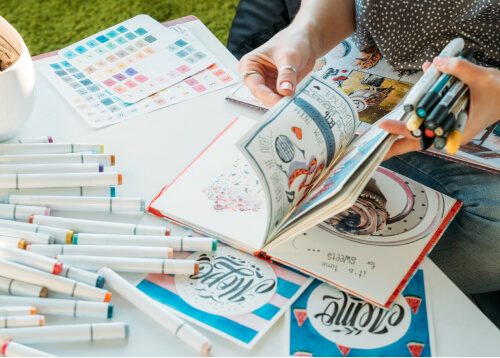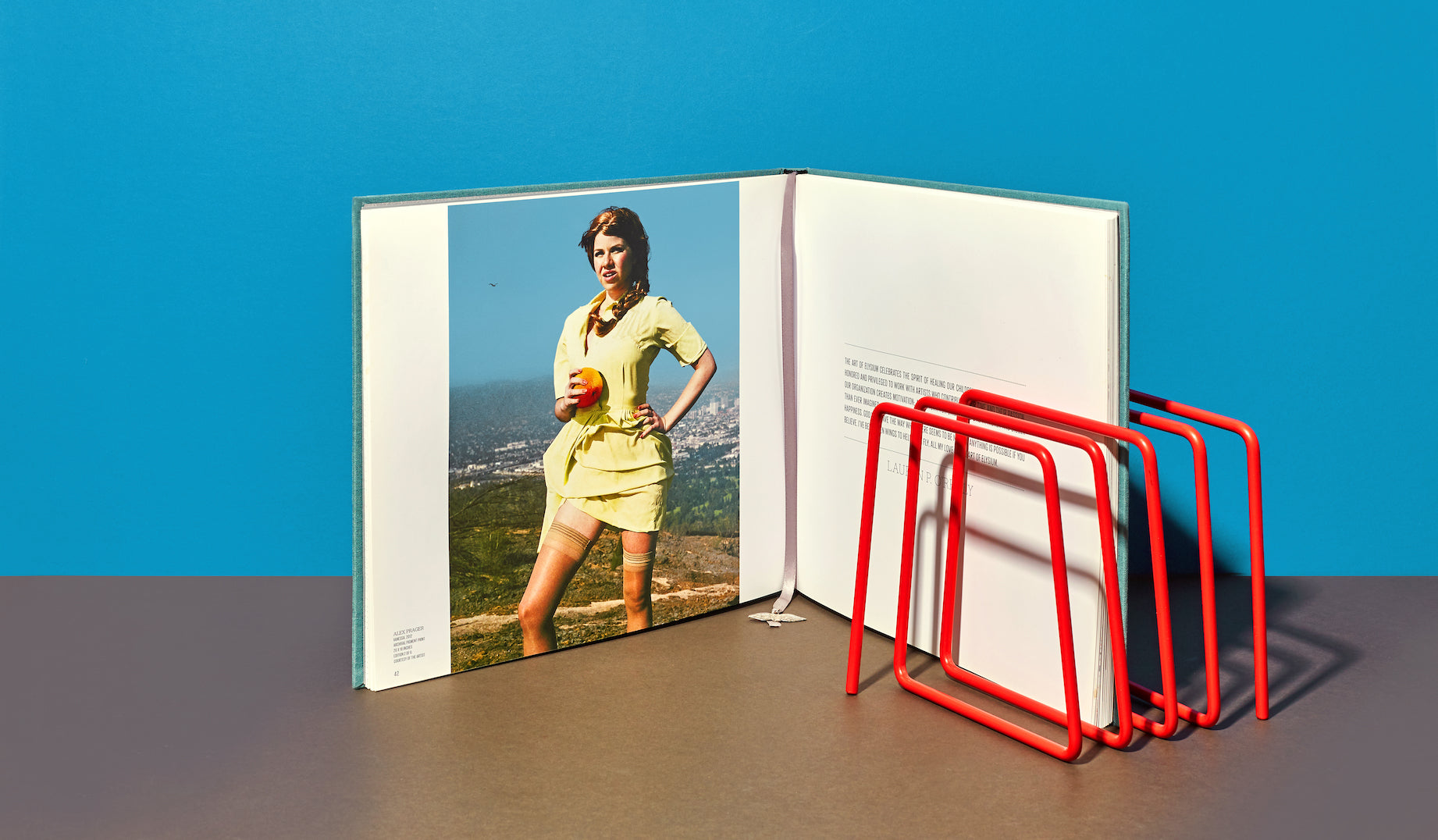Understanding the Refine Behind Premium Art Book Printing for Art Enthusiasts
When it involves top notch art book printing, understanding the details of the process can boost your recognition for the end product. You might not understand how crucial paper choice and ink selections are to the vibrancy of artwork. Each component plays a significant duty in achieving the preferred effect. As you check out the numerous parts of art book printing, you'll uncover understandings that might change your perspective on art conservation and discussion.
The Relevance of Paper Selection in Art Book Printing
When it concerns art book printing, the option of paper can make or damage the last product. You want your artwork to radiate, and the appropriate paper boosts color vibrancy and detail. Think about aspects like weight, appearance, and coating; these elements significantly affect exactly how viewers regard your job.
For example, a heavier stock conveys high quality and toughness, while a distinctive coating can include deepness to photos. Smooth paper is superb for thorough recreations, permitting great lines and refined tones to show up crisp.
Do not forget the paper's illumination; a brighter sheet can assist shades pop, making your art a lot more captivating. You'll additionally intend to assume regarding exactly how the paper engages with inks and whether it can manage the printing process without deforming or bleed-through. Ultimately, selecting the right paper establishes the phase for your art, guaranteeing it catches the audience's attention equally as you pictured.
Picking the Right Inks for Vibrant Recreations
Picking the right inks is simply as vital as choosing quality paper to accomplish vivid recreations in your art book. When you're publishing art work, you desire colors that pop and properly stand for the original item. Select inks with a high pigment concentration; these tend to produce richer and extra saturated colors.
You may consider making use of archival inks, which stand up to fading in time, guaranteeing your art book stays as striking as the day it was published. If you're dealing with pictures or digitally developed art, pigment-based inks can offer a bigger color range, enhancing information and deepness.
Don't neglect about the coating! Matte and glossy inks can substantially alter the look of your artwork, so think of the look you're aiming to attain - art book. Ultimately, the ideal ink selection complements your paper choice, developing a spectacular aesthetic experience for your viewers
The Function of Color Monitoring in Print Quality
Color administration plays an essential function in accomplishing high print top quality for your art book. It guarantees that the colors you see on your display convert properly to the printed page. Without efficient shade monitoring, your vibrant artworks may appear boring or altered, threatening your creative vision.
To start, calibrate your screen consistently. This action helps maintain consistent color representation. Next, utilize shade accounts customized for your printer and paper kind. These accounts lead the printer in reproducing colors accurately, decreasing inconsistencies between digital and printed versions.
When you prepare your data, think about using a color space like Adobe RGB or CMYK, relying on your printer's requirements. Constantly evidence your work, too; a test print can disclose any kind of prospective color issues prior to the last run. By focusing on color management, you safeguard the honesty of your art, ensuring your audience experiences it as you intended.

Understanding Various Binding Techniques
Achieving the perfect seek your art book surpasses color management; binding strategies also play a substantial function in its total presentation and resilience. You have numerous choices to review, each with its own one-of-a-kind attributes.
If you're aiming for an expert feeling, case binding supplies a durable alternative with a hard cover, best for showcasing your art work. On the other hand, best binding provides a versatile back while keeping expenses down, making it a preferred choice for softcover publications.
Spiral binding permits your art book to lay flat, which is excellent for presenting images without obstruction. At the same time, saddle stitching is excellent for smaller brochures, offering a tidy finish without the bulk.
Ultimately, the binding method you select need to reflect your artistic vision and exactly how you desire viewers to involve with your job. See to it to weigh these options very carefully to attain the ideal outcome for your task.
The Impact of Print Size and Layout on Presentation
While the choice of print size and layout may seem secondary to material, they significantly affect just how your art work is regarded. The measurements of your prints can either improve or reduce the effect of your items. Larger prints can draw audiences in, enabling them to appreciate elaborate details, while smaller formats could call for even more intimate involvement.

Preservation Strategies for Resilient Art Books
To guarantee your art publications stand the test of time, it's important to carry out effective conservation techniques. Beginning by keeping them in a cool, completely dry environment, far from direct sunshine and humidity. This stops fading and warping, keeping your web pages intact. Usage acid-free storage boxes or safety sleeves to shield them from dust and physical damages.
When handling your books, constantly wash your hands or use cotton handwear covers to avoid oils and dirt moving onto the web pages. Avoid flexing or wrinkling the backs; instead, utilize book sustains when displaying them.
For included protection, think about buying archival-quality materials for any type of fixings or his explanation enhancements. On a regular basis examine your collection for signs of wear or damage, attending to concerns promptly. By complying with these basic approaches, you can guarantee your art books stay lively and obtainable for years to come, protecting their appeal and worth for future generations.
Teaming up With Printers for Optimum Outcomes
When you prepare to print your art book, choosing the right printer is vital to accomplishing your vision. Clear communication regarding your expectations and requirements will assist ensure that both you and the printer are on the same page. Let's explore how to make this cooperation as smooth and reliable as feasible.
Choosing the Right Printer

Reliable Communication Techniques
Reliable interaction is important for transforming your art book vision right into fact, especially when working together with printers. art book. Beginning by plainly outlining your job's objectives, consisting of layout elements, preferred materials, and any type of details printing strategies. Don't be reluctant to share your motivations and recommendations; this assists the printer helpful hints recognize your visual
Set up regular check-ins to talk about development and attend to any type of inquiries. Usage visuals, like mock-ups or examples, to share your concepts extra effectively. Be open to feedback, as printers frequently have important insights that can enhance your project. Lastly, maintain a positive relationship by being respectful and appreciative of their knowledge. This collaboration will certainly assure that your art book satisfies your expectations and shines in its final kind.
Frequently Asked Questions
What Are Usual Errors to Prevent in Art Book Printing?
When printing your art book, stay clear of usual mistakes like poor resolution pictures, wrong shade profiles, and overlooking page format. Don't forget to check and verify details to validate your end product fulfills your expectations.
How Does Digital Printing Differ From Typical Printing Techniques?
Digital printing uses electronic files to develop prints directly, enabling quicker turn-around and customization. In comparison, conventional techniques entail physical plates, which can be lengthy and less versatile for small runs or special designs.
What Is the Normal Turnaround Time for Art Book Printing?
The normal turnaround time for art book printing differs, but you can expect it to take anywhere from a couple of weeks to several months. Variables like complexity, amount, and printing method all influence this timeline.
Can I Publish a Limited Version Art Book Financially?
You can print a restricted version art book economically by picking cost-effective products, maximizing print runs, and utilizing electronic printing alternatives. Careful preparation and budgeting will certainly help you accomplish top quality without overspending.
What Are the Environmental Factors To Consider in Art Book Printing?
When considering art book printing, you ought to assume about environmentally friendly products, lasting inks, and energy-efficient processes (art book). Choosing regional printers can additionally lower your carbon footprint, making your project both lovely and eco responsible